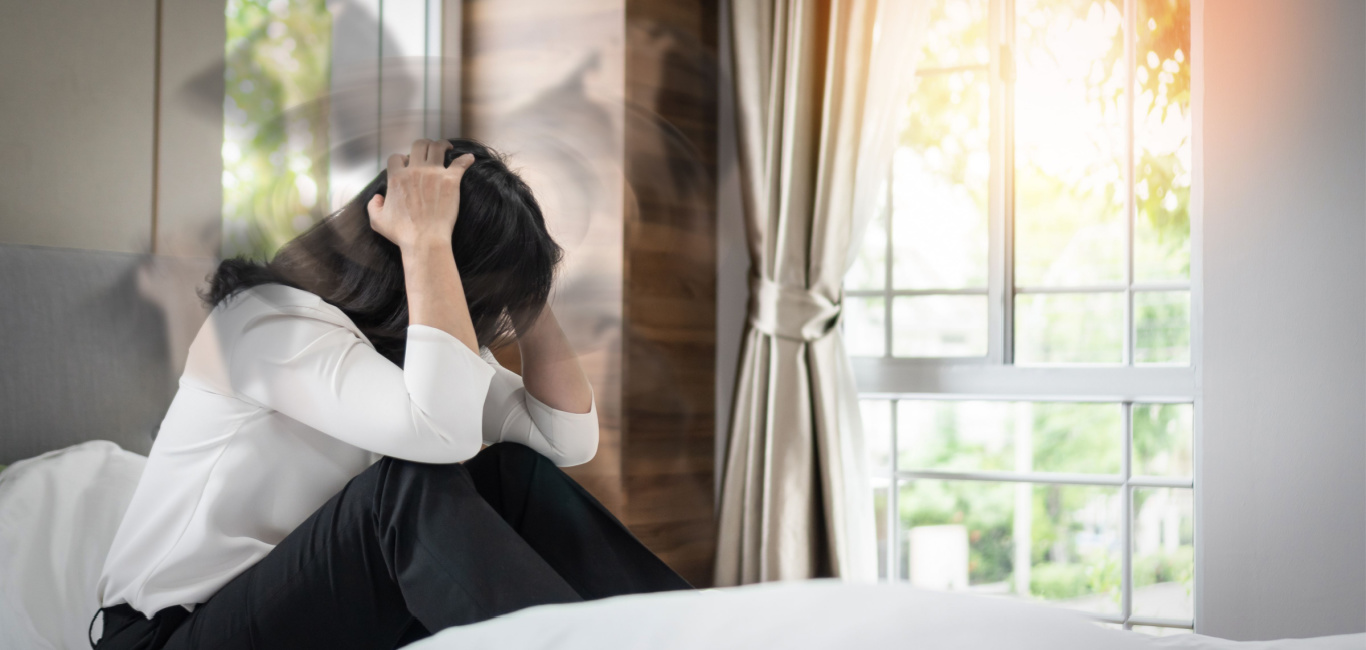
Shrajal Verma, 28, Delhi, experienced a throbbing headache first at the age of 25. “It was not like any usual headache I used to get, and it lasted for a day,” she recalls. After a few months, she experienced a similar headache again. “When I described it to my mum, she suspected it was migraine as she experiences it as well.”
What is a migraine?
A migraine is one of the most common types of headaches. It constitutes for about 6 to 10 per cent of headaches. The person experiencing a such episode feels a throbbing pulsating extreme level of headache usually on one side of the head. These headaches are often debilitating and can last from a couple of hours to even for days, according to Dr Raashi Khatri Panjabi, consultant (orofacial head and neck pain management), P D Hinduja Hospital and Medical Research Centre, Mumbai.
What type of headache is a migraine?
Primary and secondary headaches are two broad categories to classify different types of headaches based on their underlying causes.
- Primary headaches: Primary headaches are not a symptom of an underlying medical condition or disease. Instead, they are the primary health problem themselves.
- Secondary headaches: Secondary headaches are caused by an underlying medical condition or external factors, such as an injury or infection.
“According to the International Classification of Headache Disorders, migraine comes under primary headache,” says Dr Ria Emmanuel, ENT consultant specialised in allergy and immunotherapy, Narayana Multispeciality Hospital, Bengaluru.
Migraine symptoms
According to Dr Emmanuel, one of the primary symptom is a recurrent intense, one-sided throbbing or pulsating headache that lasts from hours to days. The other accompanying symptoms are:
- Nausea
- Vomiting
- Sensitivity to light (photophobia)
- Sensitivity to odour (hyperosmia)
- Sensitivity to sound (phonophobia)
What triggers a migraine?
According to both Dr Panjabi and Dr Emmanuel, pain can be triggered by a wide variety of reasons. A few of them are:
- Lifestyle-related triggers (diet and sleep pattern): Certain foods and beverages like chocolate, caffeine, and alcohol can trigger migraine headaches in susceptible individuals. Irregular sleep schedules or insufficient sleep can disrupt the body’s natural rhythm and have the same effect.
- Stress: Stress is a common trigger for migraine headaches, as it can lead to muscle tension and the release of stress-related chemicals in the brain, contributing to headache development.
- Hormonal triggers: Hormonal fluctuation, especially a drop in estrogen levels (commonly seen during menstruation or menopause), can trigger migraine headaches in many women as it influences blood vessels and neurotransmitters.
- Obesity: Obesity increases the risk of migraines, likely due to the chronic inflammation and changes in hormone levels that often accompany excess body weight.
- Smoking: Smoking and exposure to secondhand smoke can trigger migraines, possibly due to the vasoconstrictive effects of nicotine and the release of certain chemicals that affect blood vessels and nerves in the brain.
- Sensory triggers: Bright light, particularly flickering or intense light, can trigger migraine attacks or worsen existing headaches. This sensitivity to light is known as photophobia. Similarly, strong smells or specific odours can also trigger them.
For Verma, who was diagnosed with migraine, stress was the trigger.
Who is at risk of getting a migraine?
According to Dr Panjabi, migraine pain can affect a broad range of individuals and are often exacerbated by movement, light, sound, and smells. Risk factors for migraines include:
- Genetics: Migraines tend to run in families, suggesting a genetic predisposition.
- Gender: Females are more prone to migraines than males, largely due to hormonal influences.
- Smoking: Smoking can worsen migraines and is considered a significant risk factor.
- Stress: High levels of stress can trigger or exacerbate migraines.
- Hormonal changes: Hormonal fluctuations during menstruation and ovulation can lead to severe migraines.
Diagnosis
According to Dr Emmanuel, diagnosing migraine mostly involves:
- Clinical history: The expert will look for a detailed clinical history, including the POUND criteria (Pulsating pain, Duration, Unilateral, Nausea, and Disabling effects), which, if met, strongly suggest migraine.
- Imaging: Occasionally, an MRI or CT scan can be an option to find out the other causes of headache.
- Headache diary: Keeping a headache diary helps track the frequency, triggers, and characteristics of headaches, aiding in diagnosis and treatment planning.
Treatment options
The treatment of migraines depends on their frequency and severity. There are two main categories : episodic and chronic.
Episodic migraines: These occur on fewer than 15 days per month. Treatment may involve pain relief medications to manage individual attacks.
Chronic migraines: These occur on 15 or more days per month for at least three months. Treatment may include medications to manage acute attacks, prevent further episodes, and lifestyle modifications.
How to reduce migraine attacks
Recommendations by Dr Emmanuel and Dr Panjabi
For those who cannot or prefer not to use medication, lifestyle changes can help manage migraines.
Sleep management: Ensure a consistent sleep schedule of seven to nine hours.
Dietary changes: Avoid trigger foods and maintain regular mealtime.
Stress reduction: Do stress management techniques like meditation, yoga, and relaxation exercises.
Regular exercise: Engage in regular physical activity for at least 30 minutes.
Medication has helped for Verma. She also maintains a migraine journal. “I avoid chocolates as it acts as a trigger. I try to meditate regularly to keep myself calm as stress is another factor.” She further says that during an attack, sitting in a dark and silent room helps her to some extent.
While there is no definitive cure for migraines, understanding the condition’s triggers and treatment options will help individuals take control of their health. With proper diagnosis and a combination of medication and lifestyle adjustments, those dealing with it can effectively manage their condition and reduce the frequency and intensity of the attacks.

















